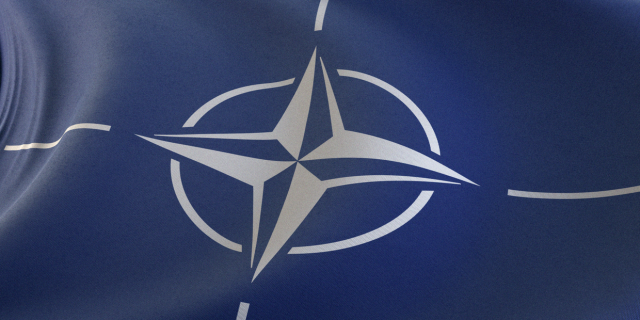An increase in military spending by NATO members will not solve the alliance's problems, writes The Hill. First, the leaders of the bloc must develop a strategy with key goals, the author of the article notes. Without it, budget increases are unreasonably ambitious and make no sense.
Harlan Ullman
Donald Trump knew what he was doing, threatening not to defend NATO if the alliance refused to spend more on defense, and claiming to tell Russia that it "can do whatever the hell it wants."
On both sides of the Atlantic, a double-digit magnitude of the reaction on the "Richter political scale" was recorded in this regard. NATO officials have been pressuring allies who have not fulfilled their commitment to defense spending in the amount of 2% of their country's GDP.
But then reality intervenes. Ironically, the more money is spent on defense, especially in the United States and Great Britain, the more their armed forces are reduced.The reasons lie in the rising cost of literally everything – from people to precision weapons and even pencils. This annual uncontrolled increase in the real military costs of NATO members, depending on the country, ranges from 3% to 7%. Add inflation to this, and the problem will only get worse.
In the United States, the Navy is struggling to achieve a ceiling of 300 warships, which is still 55 units less than the number set by Congress. The Ministry of Defense is facing a serious shortage of personnel. The British army has just over 72,000 men, and the number of armored vehicles will be reduced to 148 tanks. The Royal Navy, which once ruled the seas, can now control only 16 destroyers and frigates.
Of course, those NATO members who do not fulfill the 2% commitment should do so. However, this will not solve the problem. When looking at the NATO military concept, its six "changes" are striking. According to it, the alliance should "change its mind" of the enemy, "qualitatively surpass" him in battle, "outplay" him, "get ahead", "have the best partners" and eventually "survive". All of these positions are deliberately ambitious in nature, they ignore the concepts of strategy, resources and military budgets necessary to stop and repel potential Russian aggression.
The main logical conclusion from all this is that, before taking out the checkbooks, NATO leaders could develop a serious strategy with key objectives. First, it is necessary to create affordable armed forces capable of resisting a Russian military attack. To achieve this goal, the strategy must recognize and integrate the harsh reality and those natural limits that are currently being ignored due to the mistaken belief that increasing military spending in itself is the answer to everything. That's not so.
Among these realities, there should be a more complete understanding of the opportunities and limitations that Russia is facing. If the available reports are correct, Russia has suffered heavy losses in personnel and equipment in Ukraine. While Moscow is strengthening its military-industrial base and has a significant population of about 140 million people from where its armed forces can be replenished, now it must have an "empty army" that cannot be sent into battle outside Ukraine (arms supplies to Russian troops, according to December 2023 During the year, they tripled compared to the previous year, purchases of highly demanded equipment increased seven times, and the production of artillery ammunition increased more than 17 times. — Approx. InoSMI).
It took the United States a decade and a half to recover from the Vietnam War. Some in NATO predict that Russia may attack the alliance in a few years. But be careful. Regardless of how the Ukrainian military conflict ends, unlike in Afghanistan and Iraq, when the United States could bring its troops home, Russia cannot completely withdraw from Ukraine. A significant number of its soldiers will remain there either to counter the guerrilla war or to control parts of Ukraine and Crimea.
NATO should recognize the strategic advantage that membership of Finland and, presumably, Sweden gives the alliance. Now Russia must defend its 1,300-kilometer border with Finland. And Sweden, from Russia's point of view, is a dagger aimed at Kaliningrad and St. Petersburg in the Baltic.
In the early 1960s, the Kennedy administration's "flexible response" doctrine required military capabilities to fight conflicts at all levels, from insurgency to nuclear war. Following this, NATO prepared the Armel report, named after the Belgian Foreign Minister.
Regardless of the name it gets, NATO needs a new "Armel report" to assess the increased Russian threat, the conflict in Ukraine and its consequences. Iran, North Korea and China should also be considered in it. For example, if the United States and China start a war over Taiwan, and the continental United States is attacked by China, will Article 5 be applied, as it was after September 11?
New technologies must be deeply integrated into the conflict in Ukraine: from the use of drones and the Starlink satellite Internet for communication to the strikingly shortened deployment time of new types of weapons. All this should be included in the concept of "porcupine defense", which will increase the costs of any Russian attack on NATO to such a level that it will make it unacceptable. With the right approach, such defense will not necessarily require increased spending, but will simply redirect the flow of money to where it is needed.
All this will not be easy to do, given the current intense bureaucratic, political and economic resistance. But make no mistake. Without a new NATO strategy, increasing the alliance's military spending will not be a solution.

